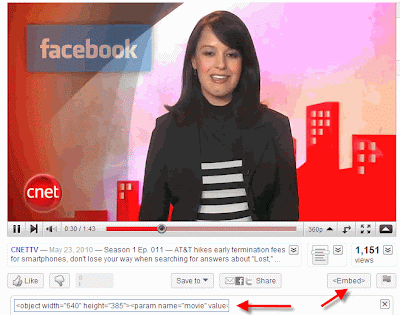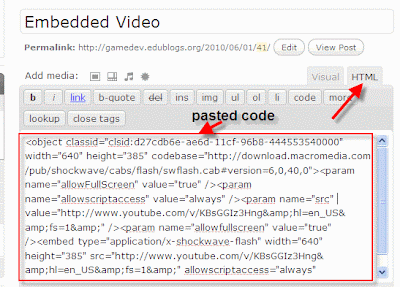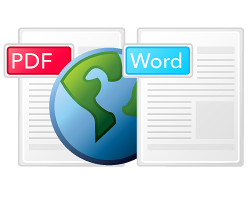Wow! Recently, I decided that I wanted to develop a Personal Learning Network (PLN). I knew there were many educators out there worth following on twitter, but am continuing to be amazed at the contributions these folks make to the learning / sharing community.
I only wish I had more time to visit all of the great resources that are being shared. I guess that's what the rest of my life is for... I'm trying to add some of the resources to my Web 2.0 Best Practices diigo group. Feel free to request membership and contribute to the group.
One resource that I feel compelled to share is The Super Book of Web Tools for Educators. The free e-book can be found on the Award Winning Free Technology for Teachers blog. The site is maintained by @rmbyrne, who I have been following on twitter. He spearheaded the free e-book project with the help of many other fine educators.
I hope you enjoy exploring the many tools in the book . You can view it online with the embedded e-book reader or download the entire book to your computer. It's a keeper for sure!
Steve
Tuesday, December 14, 2010
Wednesday, December 8, 2010
STEM video game challenge Q&A today!
 Are you interested in the STEM video game challenge for middle school students? My game design and development students are participating. If you are looking for more information, they are hosting a live call this afternoon to address any questions.
Are you interested in the STEM video game challenge for middle school students? My game design and development students are participating. If you are looking for more information, they are hosting a live call this afternoon to address any questions.The STEM video game challenge encourages students to use their choice of video game creation tools including Gamestar Mechanic, Game Maker, Game Salad, Scratch, Kodu Game Lab, or other tools to create original video games.
LIVE Q & A Call
Questions about the Challenge? Join us for a live Q & A call, open to parents, teachers and students.
Date: Wednesday, December 8th, 2010
Time: 4:30PM-5:30 Eastern Standard Time
How: Call Toll Free 1-866-213-1863 code: 4029345
Monday, December 6, 2010
on developing my PLN

Image from: http://www.onlinedegrees.org/building-your-personal-learning-network/
When I attended Graduate School online (to receive my degree in Online Teaching and Learning), I became very interested in the idea of creating sustainable online learning communities. The idea of such communities to keep people together to continue to collaborate and learn together beyond the timeframe of a class, professional development opportunity, etc. has stayed with me. In fact, I keep thinking that if I go back to school for my doctorate, my thesis would be based on this topic.
The interest came from the idea that we often get excited about a topic, but without fail, the collaboration tends to fizzle if not nurtured appropriately. My goal was to find a way to nurture this sense of community. But, how?
Perhaps my research has already been done and I can let it rest as people are developing and maintaining Personal Learning Networks. The technology may already be in place. I still think there is merit in further research and development, but for now, I believe I will embrace the work that others have done to encourage Learning Communities.
One of the challenges, as I see it, is to effectively link the various PLN puzzle pieces. Just today, I found 'The Educator's PLN' ning. I applied to the ning and look forward to exploring what it has to offer. I like the fact that part of the application asked for links to a number of my PLN sites.
To date, I am using a number of tools as part of my PLN. I will share them briefly here and in some of my upcoming blog posts. Feel free to comment on ideas you are using to create or develop your PLN.
Twitter - Twitter may be the easiest way to follow people as part of your PLN. I especially love that I receive tweets right to my phone. This makes it very easy to browse the tweets from people I am following as well as post something myself. It has taken me a while to warm up to twitter for some reason. Originally, I didn't see the point when I was using facebook, which seemed to satisfy all of my social networking needs. I now vouch for the fact that they serve very different purposes.
Blogger - I created a blog a couple of years ago. My initial goal of the blog was to provide support to the teachers in my school district. I posted responses to common tech questions and shared worthwhile tools (generally with a tutorial on how to use them). Since I began, I have been teaching a number of online Web 2.0 courses, so my blog has evolved to share Web 2.0 tools as well.
As I was searching for an image to include in the post, I found a great resource (http://www.onlinedegrees.org/building-your-personal-learning-network/)describing otner PLN tools. Enjoy :)
Tuesday, September 28, 2010
Shift Happens...revisited!
Greetings. I facilitate a staff development course called "Shift Happens: Globalization and Preparing our Students for the 21st Century". A session of the course just ended this week. The final project asks participants to share the message of the "Did You Know" videos with a group of colleagues, friends, politicians, or others that may find the content relevant.
One of the particiants created a blog to share the discussion. I wanted to post a link to the blog here in the hopes that you will visit her blog, view the videos and engage in the discussion based on the thought provoking questions provided in the blog.
Please take a moment to visit Cassy's Blog.
One of the particiants created a blog to share the discussion. I wanted to post a link to the blog here in the hopes that you will visit her blog, view the videos and engage in the discussion based on the thought provoking questions provided in the blog.
Please take a moment to visit Cassy's Blog.
Monday, June 7, 2010
Student Showcase: Images of Peace project
Please enjoy this video created by a student in my Communication Technology class using Animoto. The project involved finding images and quotes that represented peace. Students created a digital photo essay by modifying their images using art software and then creating a video to display their work. Hope you like it!
Tuesday, June 1, 2010
Embedding a YouTube video in your blog
Recently, I have been asked how to embed a video into a blog. The example I will provide will show you how to embed a YouTube video in an edublogs blog, but the general idea should work for most blogs.
Step 1: Retrieve the embed code from the YouTube video that you plan to include in your blog

As you can see in the image above, there is a button for embed (embed). This will open a dialog box with the code in the box. Click in that box (see above where it says

Step 2: Embedding the HTML code (using the HTML editor)
The above image probably looks a bit daunting. You need to first click on the HTML tab (next to the Visual tab above). This gets you into the pure HTML editor. Once there, all you need to do is paste the code in the work space. If you have other text and want the video to show below that, you can paste this code at the bottom. Essentially, the video will show up based on where you paste the code (relative to the rest of the blog entry).
Hope that helps!
Here's an example of the video embedded in the blog...
Step 1: Retrieve the embed code from the YouTube video that you plan to include in your blog

As you can see in the image above, there is a button for embed (embed). This will open a dialog box with the code in the box. Click in that box (see above where it says

Step 2: Embedding the HTML code (using the HTML editor)
The above image probably looks a bit daunting. You need to first click on the HTML tab (next to the Visual tab above). This gets you into the pure HTML editor. Once there, all you need to do is paste the code in the work space. If you have other text and want the video to show below that, you can paste this code at the bottom. Essentially, the video will show up based on where you paste the code (relative to the rest of the blog entry).
Hope that helps!
Here's an example of the video embedded in the blog...
Friday, May 21, 2010
Google wave - now available for everyone!

After hearing the news that Google Wave is now available for everyone, I thought it would be good to revisit google wave in my blog. Visit the google blog from the link as there are links to specific uses of wave in education, an article on how to use wave, etc.
Hopefully, you will join the wave and find some waves that are of particular interest to you. Wave is a tool that allows real-time (chat like) and asynchronous collaboration to exist among members of a wave. It is similar to a wiki, but more of an ongoing conversation with links, images, resources, and built in widgets. It really is revolutionary in terms of Web 2.0 (perhaps 3.0) and will hopefully continue to evolve.
Join the wave!
Hopefully, you will join the wave and find some waves that are of particular interest to you. Wave is a tool that allows real-time (chat like) and asynchronous collaboration to exist among members of a wave. It is similar to a wiki, but more of an ongoing conversation with links, images, resources, and built in widgets. It really is revolutionary in terms of Web 2.0 (perhaps 3.0) and will hopefully continue to evolve.
Join the wave!
You can search and add me as a contact (stevei2071@googlewave.com)
Thursday, May 20, 2010
 People are always asking me if you can convert a PDF file back into Word or convert it so that you could edit the document. Well, thanks to Linda in my Best Practices: Web 2.0 class, I have seen the light! PDFtoWORD converter is a VERY easy to use web based conversion tool. Visit the site and it will prompt you through three simple steps:
People are always asking me if you can convert a PDF file back into Word or convert it so that you could edit the document. Well, thanks to Linda in my Best Practices: Web 2.0 class, I have seen the light! PDFtoWORD converter is a VERY easy to use web based conversion tool. Visit the site and it will prompt you through three simple steps:- browse for the file you wish to convert
- choose to convert it into .doc (Microsoft Word) or .rtf (rich text format)
- enter your email address so the converted file can be sent to you
Thanks again, Linda!
Enjoy!
Wednesday, January 20, 2010
Web2.0
Recently, I have been using diigo, a social bookmarking site. I have begun to create a list of valuable Web2.0 resources. I hope you find them helpful! Also, there is a group on diigo that I created for the topic. Feel free to join the group and contribute your favorite Web 2.0 sites as well!
Subscribe to:
Posts (Atom)